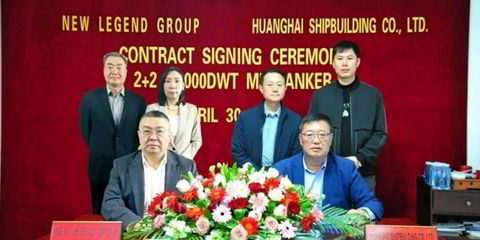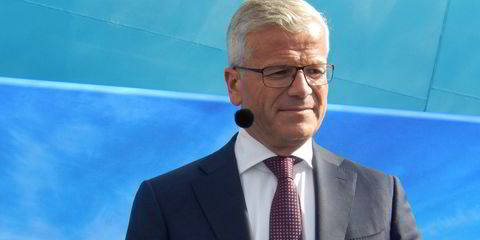Shipowners have been more cautious in ordering offshore wind vessels this year as the sector feels the impacts of cost inflation and high interest rates.
Clarksons Research has noted elevated commodity prices also exerting margin pressures on developers and the supply chain.
This has hit the near-term viability and timelines of some wind farms in the advanced stages of planning in the UK and the US.
Timelines have slipped at UK projects totalling at least 7.5 gigawatts, while some developers in the US are tearing up or renegotiating offtake deals, Clarksons Research said.
“Investment in dedicated newbuild wind vessels has generally eased back in 2023 to date, though has remained firm in the commissioning/service operation vessel [CSOV] sector,” it added.
So far this year, 77 ships have been ordered for wind work, representing an investment of $2.3bn, nowhere near last year’s record of $6.1bn.
Only five wind turbine installation vessels (WTIVs) have been contracted, worth $810m, against 30 vessels worth $4.4bn contracted last year.
“A large Chinese WTIV orderbook, high newbuilding costs and potential delays at future farms in Europe and the US have softened sentiment for WTIV newbuilding,” Clarksons Research said.
Ordering in the CSOV sector has remained firm, with 17 units added to shipyards’ backlog.
These are costing $1.1bn, up 5% on last year’s all-time high.
Clarksons also tallies 55 crew transfer vessel orders worth $335m, up 29% from 2022 on an annualised basis.
Outlook remains positive
The outlook for the European wind vessel sector remains positive, it said, despite WTIV utilisation softening to 86% at the start of October, having averaged 92% from May to September.
The company believes the market will tighten towards 2026, and the long-term outlook for growth of the offshore wind industry globally is still healthy.
Active offshore wind capacity is projected to reach 255 GW by 2030 — a fourfold increase on the current capacity.
“While inflationary pressures have impacted the short-term viability of certain projects, long-term growth of installed capacity is expected to be driven by underlying energy transition trends, supported in part by refreshed energy security concerns in Europe,” Clarksons said.





